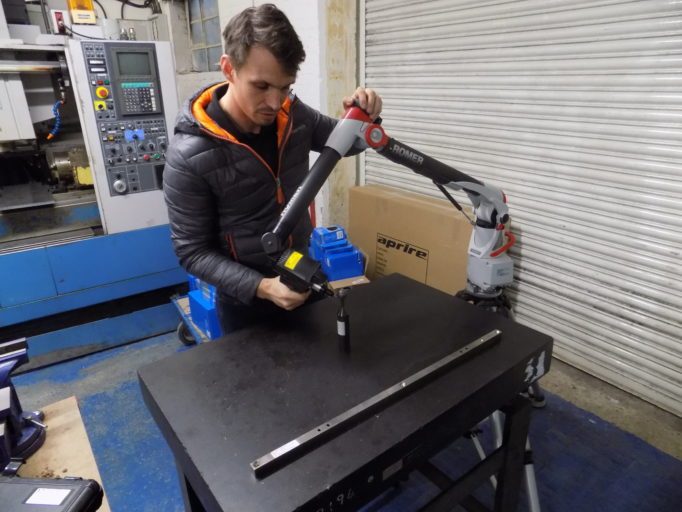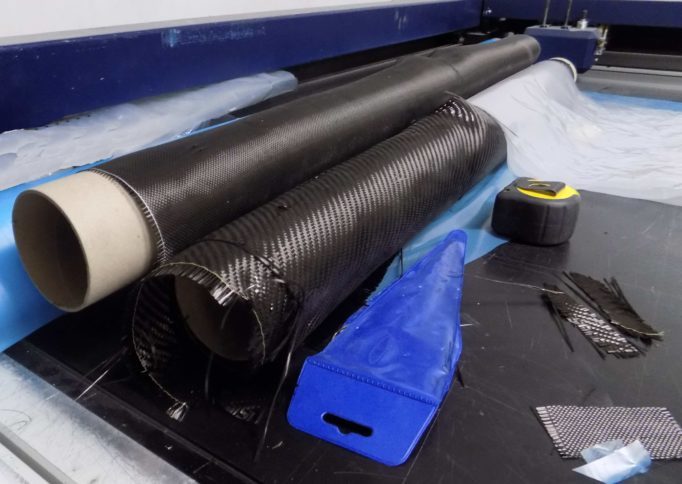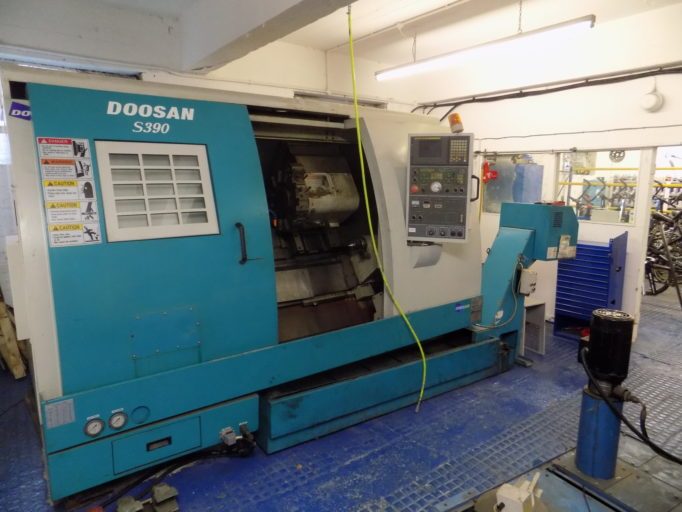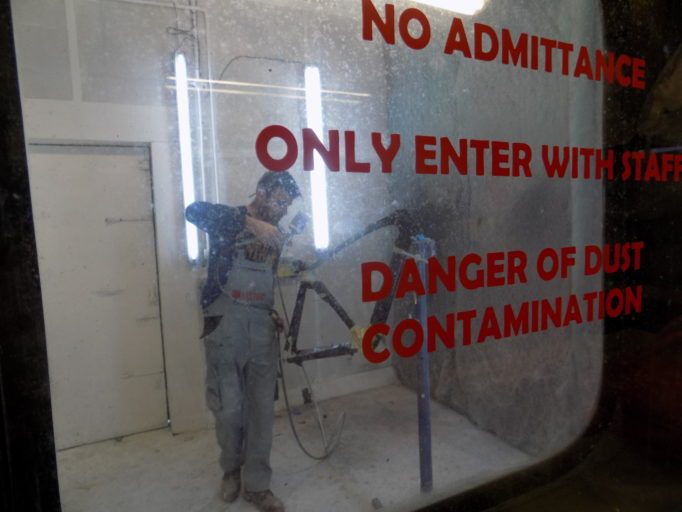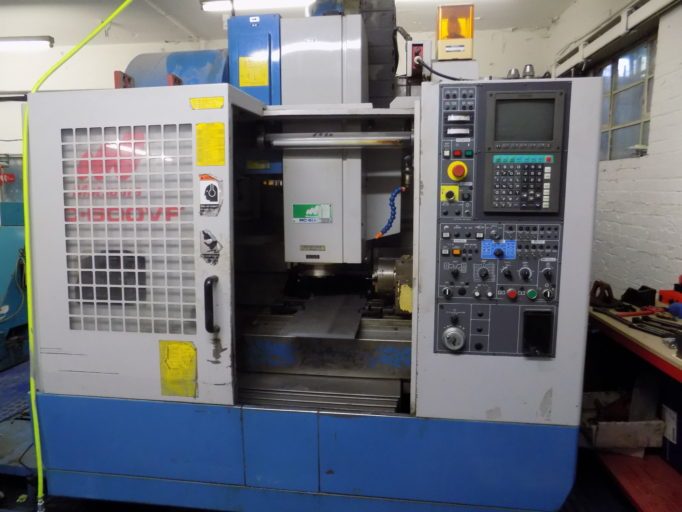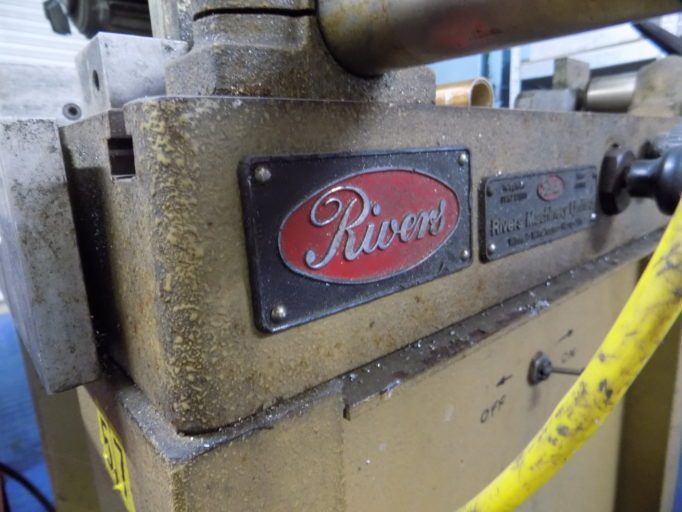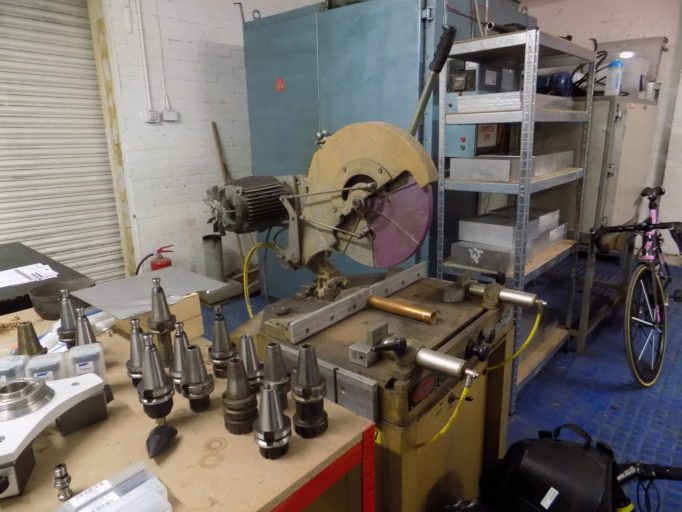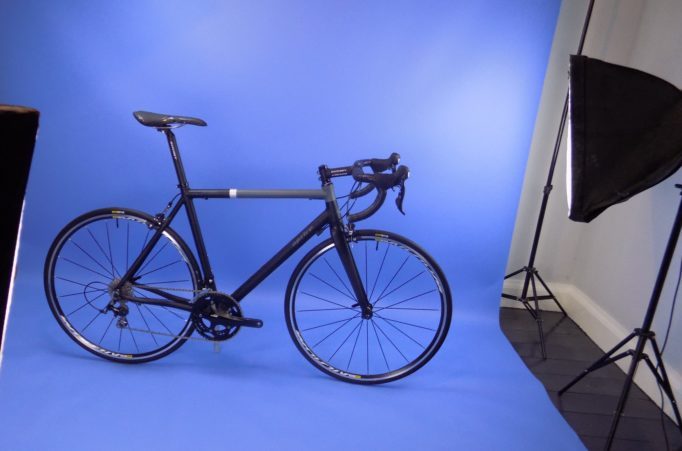Cycling Life: Cycles Perfecta Factory Visit
Cycling Life: Cycles Perfecta Factory Visit
Paul Horta-Hopkins
Cycles Perfecta, bringing top end bike manufacturing back to the UK?
I had an email recently, asking me if I’d like to look at a range of carbon bikes; nothing new there, until I read on. The email was from a small brand called Aprire Bicycles that are manufactured in the UK. Yes, carbon, manufactured in the UK! Surely some mistake? Carbon bikes are made in China, aren’t they? It seems no one had told these guys this was the case. Aprire Bicycles are the in-house brand of Cycles Perfecta and it was their offices I was going to visit. So does this mark the start of a new cycling industrial revolution?
Cycles Perfecta have their base in Cheam, Surrey, just to the north of the Surrey Hills Area of Outstanding Natural Beauty. This means there’s plenty of excellent cycling roads right on their doorstep on which to try out their designs, and sitting just south of London in commuter land means they are surrounded by plenty of potential customers.Driving up from the coast, I was passing through many of my old favourite rides. A factory visit was the last thing on my mind and I was regretting not packing my bike.
On meeting Cycles Perfecta’s engineering manager and founder Phil Dempsey, my regrets were soon forgotten. Phil is a keen cyclist, but he’s an even keener engineer. He’s the kind of guy that left alone will tinker, fiddle and fettle. Finding solutions and fixing problems are the engineers reason for getting up in the morning and you can tell Phil has that urge. Over a cup of tea in the design office, talk of carbon fibre toilet seats proves that urge to make stuff is still strong!
We get to talking about the design process involved in building a frames. What Phil and his team bring to the process is years of experience both riding and building bikes, plus the ability to do their sums on paper! Phil says that there are many programmes out there that will help design you a frame; you input the numbers and it spews out the results. The only problem is if those initial numbers are wrong, then what you get at the end is not going to ride well. Being able to work out complex design problems needs an understanding of basic engineering principles and being able to sit down to do the maths. So that’s me out then.
Phil and his team will sit down and work out their designs using bits of paper and 3D design programmes. Ideas are bounced off each other and the answer may only come after many attempts. During this design process FEA (Finite Element Analysis) programmes can be used to create virtual models of sections or the whole frame. These models can then be stressed to see how they react and changes can be made. Before these programmes existed, designers would have to build an actual bike, then test it noting any weaknesses. Changes would be made, but you would then have to make another frame and test that to see if those changes were successful. That means longer design times and higher costs. FEA has done away with all that wasted effort and allows you to make as many changes and tweaks as you want.
Another set of acronyms that figure in the design process is CFD (Computational Fluid Dynamics). This has been a big game changer. With the demand for aero everything, products have to be tested in wind tunnels, which aren’t noted for being cheap to run. And once tested, changes made, then retested. Sound familiar? As with FEA, CFD allows designers to create virtual models and test them under all kinds of conditions. Virtual changes are made and tested, over and over, until the product is right.
All this computer power has made bike design a real science. The old days of joining round tubes in a limited number of ways has well and truly gone. Carbon has freed builders to create shapes and solve problems that weren’t possible before. However, you still need an understanding of how things work and that’s where Cycles Perfecta’s experience comes in.
Phil has a background in carbon lay-up and stress analysis, garnered from stints working in the nuclear industry and London Underground. Added to this is a decade designing frames, suspension systems and brakes for companies such as Hayes, FUNN, DMR and Banshee Bike. He’s also worked in China’s bike manufacturing industry and while there, realised there were improvements that could be made. It’s clear to see he knows his stuff.
And part of that ‘stuff’ was realising that the bicycle industry is a very traditional industry, using methods that haven’t changed in decades, despite new methods being available. Looking towards other industries, such as the automotive, Cycles Perfecta have brought in different ideas to improve their processes and reduce costs.
One of these ideas is the production of the carbon moulds. Traditionally these ‘blanks’ have been cut from tool steel. If you Google Tool Steel then what you get is this, “Tool steels are used for cutting, pressing, extruding, and coining of metals and other materials. Their use, such as the production of injection molds, is essential, due to their resistance to abrasion, which is an important criterion for a mold that will be used to produce hundreds of thousands of moldings of a product or part.”
Carbon fibre bicycle frames are amazing things; strong, light, flexible. What they are not is metal. To make a carbon frame, carbon fibre ‘cloth’ is impregnated with resin, then laid into a mould. They are then heated and pressure is applied in ovens. Ok, that’s really simplified, but it’ll do for now. No bashing, scraping or white-hot temperatures are involved. So why use tool steel? It’s heavy, requiring a lot of power to move it around and heating it up takes a huge amount of energy. Cycles Perfecta have swapped to aluminium, which is lighter, easier to machine and requires a lot less energy all round.
Cycles Perfecta are also investing in a small – for now – group of skilled workers. In the large Chinese factories, semi-skilled workers operate on simplified production lines. Employee retention is a problem, with many leaving after a year or two, to return home. This constant need to retrain staff means they have to keep processes simple and means skills are often not passed on. Keeping skilled, happy staff means they’ll feel part of the process and that means better bikes.
As I said at the beginning, I had assumed that when Cycles Perfecta said ‘manufactured’ I was going to see a load of boxes. Boxes of frames made in China, delivered to the UK and assembled here. This seems to be the standard practice and it produces some great bikes. As long as the designs are right and the quality is good, you’ll get a good bike. But instead I was led through a door and into the workshop.
Now, many years ago I started as an engineering apprentice and I’ve always loved the cosy feel of a workshop. The smells and sounds make me feel like I’m walking into Santa’s workshop! They’re a place of magic, where you can actually make stuff. And here in the Cycles Perfecta workshop there was a plenty of scope to get creative.
A giant freezer is the first item that grabs your attention. Ok, not very exciting and it doesn’t do anything, but it is an important part of the process. Pre-preg has to be kept cold to prevent the resin from curing and becoming unusable. So without the humble freezer there would be no carbon to work on! Next to the freezer is the cutting table with a couple of rolls of carbon fibre.
Holding a roll of carbon weave is an odd thing. Here is this wonder material, used in aerospace, military and racing cars. It’s tough, light and yet in it’s raw state feels as flimsy as heck. You can cut it with scissors or a craft knife into any shape. And it’s this that is between our legs as we hurtle downhill or carve that corner. I’ve bounced and crashed my carbon Handsling ‘cross bike over the 100 miles of the South Downs Way and never worried about what my frame is made from and yet I am literally sitting on some cloth…
Intriguingly there is UD fibre that we are asked not to take photos of, as it’s a proprietary technology. Cycles Perfecta are a new company and they have some new ideas, which they are obviously keen to hold on to. Makes you wonder what else has been hidden away from prying eyes and what new developments Phil and his team are working on.
If you have a freezer, then you must have an oven and what an oven. Able to take five frames at a time, it probably produces an excellent pizza as well! But it’s real role is to heat the made up moulds, allowing the resin in the carbon to flow and cure under pressure. Beside the oven is a shelf holding blocks of aluminium, ready to be turned into moulds. Phil mentions that if they had been using tool steel for their moulds, then he would need four or five tungsten-carbide tools to create each one. Using aluminium means they can cut four or five moulds with one tool.
All this cutting is done by two giant CNC machines that dominate the centre of the workshop. These create the moulds that are designed upstairs by Cycles Perfecta’s engineers. These huge lumps of modern manufacturing muscle sit quiet for now, otherwise I think conversation would be a little difficult. Sitting quietly next to them are a couple of old school items, that are still important parts of the process. The chop saw is of a certain vintage and looks reliably solid. It’s one of those items that all engineering workshops have, designed to do one thing and do it well year after year.
A large block of granite is used for taking measurements and checking for squareness. To confirm this it has an inspection plate with a date of when it was last checked. This lump of rock is an important part of the Romer 3-D scanning system that Cycles Pefecta have invested in. The is a laser measuring device that allows you to scan or measure an object and input the data to a computer. You can then manipulate that data any way you want. You could scan in a part, take it into a 3D programme, change part of it, then send that data to a CNC machine for production. It’s an incredible bit of kit and is also used by the UCI to confirm bike frames meet their criterion for what is a race legal bike.
Once through the ‘making’ part of the workshop and you’re on to what is the most important part of the process; the paint shop. You can spend thousands designing a bike and making sure it is just right, but it’s got to look nice as well! Who hasn’t had their eye caught by a fancy paint job and wanted that bike, without ever having ridden it? While the glorious days of chrome and fancy lugs are mostly gone, there are still some amazing paint jobs out there. Cycles Perfecta have their own spray booth, where all their frames are painted up.
Having their own on-site spray booth means they can offer customised paint jobs to customers. Phil is also investing in a printer which will produce water slide transfers, enabling high quality decals for their frames. This will make them one of the only bike companies in the UK able to produce their own decals in this manner. Sounds perfect for bringing a well-loved frame back to life, or getting your new frame painted just so.
But what about the bikes I hear you ask? Well Cycles Perfecta have their own in-house brand, Aprire Cycles, but will also be producing frames for other brands, although who is secret at the moment. A number of ‘open moulds’ will be made available for small brands or shops to sell as their own bikes. This is done by many of the big factories around the world and has produced some fine bikes. The benefit to UK customers is that the factory will be here, in the UK. So any problems can be dealt with quickly and efficiently.
Also manufacturing in the UK will mean a smaller carbon footprint for your bike. And while we’re looking at the environmental issue, China’s pollution problems and environmental problems are well-known. At least with a Cycles Perfecta frame, made in the UK, you know they will be made under much tougher environmental and employment controls.
Phil and his team are planning on bringing bicycle manufacture back to the UK, using quality design, improved manufacturing processes, quality control and a huge chunk of ambition. There is talk of investing in an aluminium welding machine, which will allow them to produce frames here; Aprire’s aluminium frames are currently produced in China. With their own Aprire brand plus manufacturing for other brands they hope to bring successful, large-scale manufacturing back to the UK. And for that we’ve got to wish them the best. The UK has a great manufacturing history, but maybe it’s time to look forward?
The Aprire range consists of four bikes for now – there are new models in the pipe-line – two carbon frames, the Vincenza and Celeste and two aluminium, the Inverno and Inverno AR. The Vincenza is a full on race bike, currently being ridden by the Aprire/HSS Hire Race Team. Aprire are in their third year of supporting this Elite Women’s team and are looking forward to building on past success.
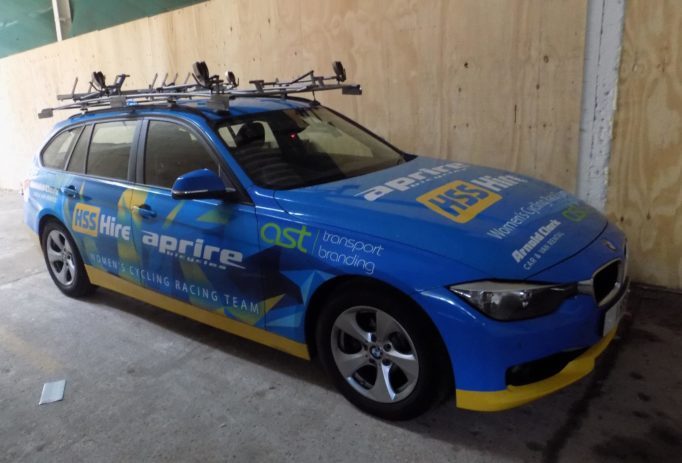
The Aprire/HSS Hire Women’s Race Team will be riding the Aprire Vincenza frame for 2017, watch out for their team car
We’ll be testing out the frames over the coming months and will let you know how we get on with them. Look out for our first preview, which will be the Inverno AR.
[rps-include blog=127.0.0.1 post=30121]


